The Truth About the 50 Best Startup Tools
The truth: Having tools at your fingertips is just the first step toward mastery.
For startup companies, mastery is a matter of experience, experimentation and staying true to your ultimate business goals–focusing on tools that actually move your KPIs forward.
At Facet, we utilize a number of tools and strive to understand how we can pull meaningful data from each one. Our hands have been busy at work, come take a look in our tool shed.
The List
A version of this list originally appeared on Quora back in 2012. However, time moves on, and we felt compelled to re-evaluate and update the tools and services mentioned.
Here’s our collection of great startup tools in 2016:
SEO Tools
Google AdWords Keyword Planner
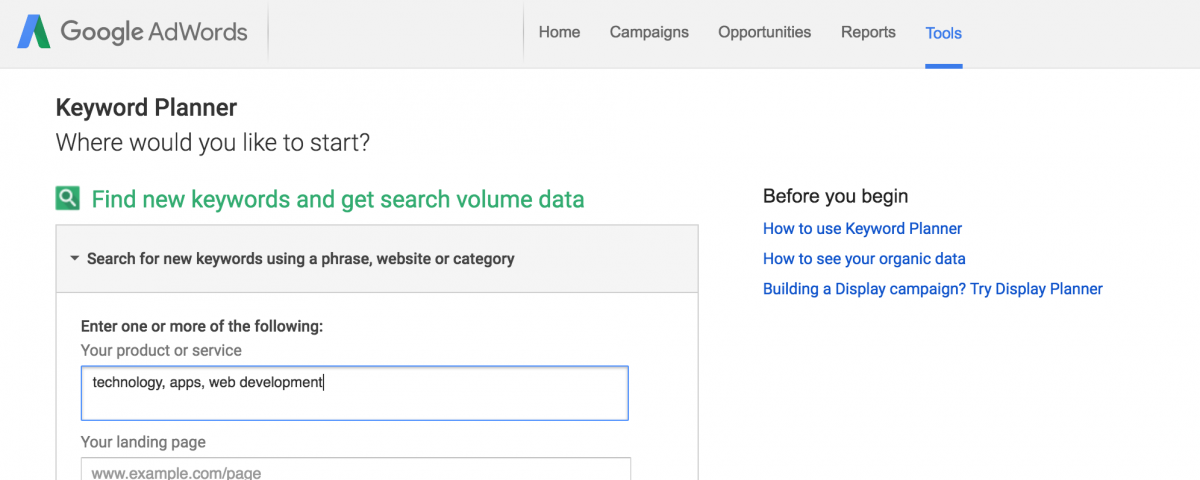
Even if you’re not quite ready to put real dollars behind a paid campaign, AdWords is an essential tool for any startup–mostly for its ability to provide you search volumes and related suggestions for keywords. If you’re not quite sure of which keywords you’d like to start targeting in your SEO strategy, this is a pretty good place to start. Input your product or service category and your website, and AdWords will return some keywords to serve as a good jumping-off point. From there, you can use a few other tools to round out your keyword strategy.
Moz
Moz has come a long way from their start as SEOmoz, and grew to provide a robust package of digital marketing tools and resources (far beyond simple SEO). However, their SEO tools alone–such as Open Site Explorer, Keyword Difficulty, On-Page Grader, Rank Tracker and the new Keyword Explorer–are hard to beat.
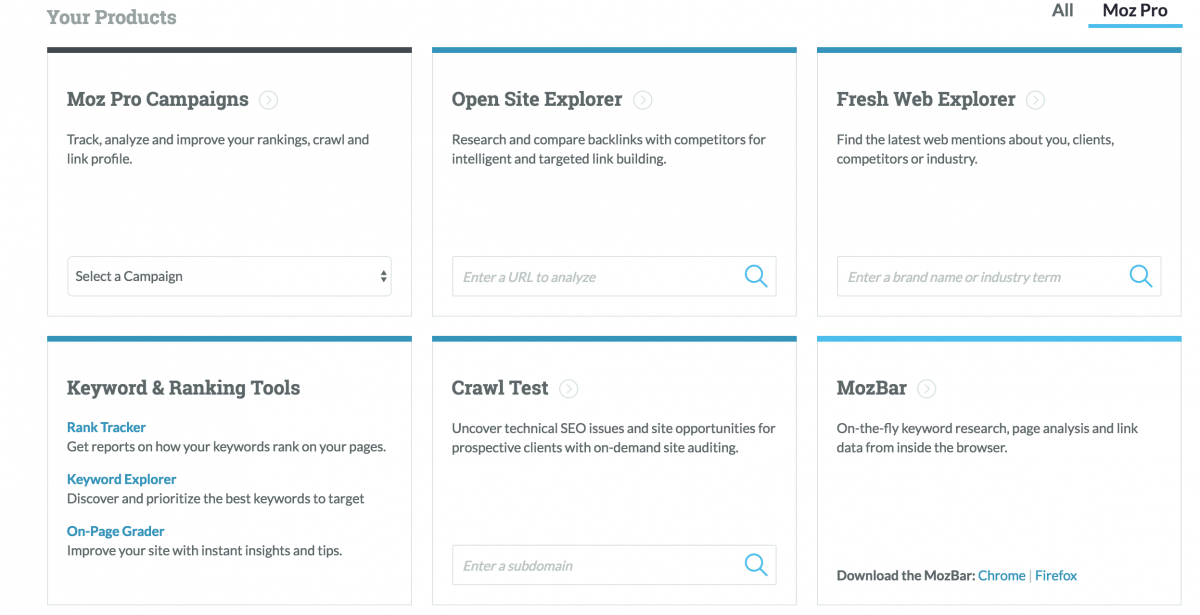
More like sweet of tools, #amirite?
Not only are you able to garner more robust search data than AdWords, but you gain insights into how well your site is earning links and how well the content on your pages is performing, in terms of keywords. Couple all those tools with their campaign tracker, and you’ll have a much better understanding of your site’s search performance.
Raven

Raven Tools, now just Raven, also provides a handful of tools to help you keep tabs on your SEO. Raven pulls their numbers directly from Moz and Majestic so you’re able to get that data without subscribing to either one. Using keyword data from those trusted sources, you’re able to quickly generate branded reports in order to have periodic snapshots of your marketing performance–this is especially handy for those of us in client marketing, but the ability to confidently report data to investors is just as crucial for startups.
Übersuggest

Übersuggest is a simple tool to quickly find keywords not available in Google Keyword Planner. It’ll generate a list of ideas, sorted alphabetically or by theme (or even word cloud), and it oftens returns suggestions you might not have considered. You can also install their browser extension to see search volume and CPC data appended in Google Search, Google Analytics and a number of other websites.
Conversion, Metrics and Research
Unbounce
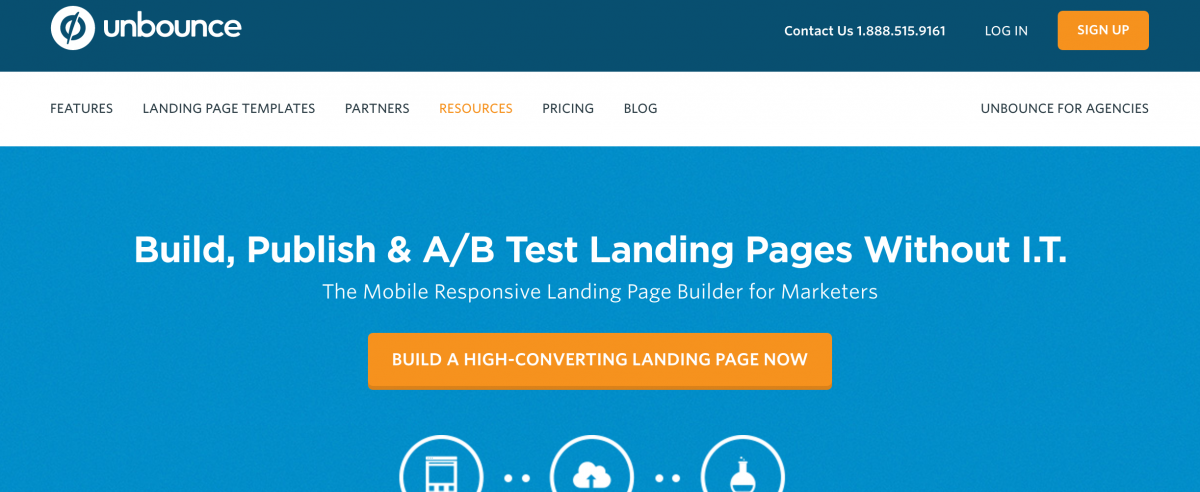
With Unbounce, you can quickly and easily build landing pages, publish them to the web and A/B test their performance all with little to no knowledge of code–they call it a “code-free zone.” Having the ability to build pages, and test them on the same platform streamlines a lot of the conversion optimization process for many companies with fewer resources.
HotJar

HotJar is an awesome new tool allowing you to see much more visual data about your website–and more specifically, how visitors engage with your website and what’s important to them. Check out heatmaps, watch recorded visitor sessions get feedback from surveys and polls and recruit user testers. For the tools you receive, it’s also pretty inexpensive.
Google Analytics

If you have a website, you should have Google Analytics installed on it–it’s as simple as that. There are other analytics platforms out there which are better for handling websites with high traffic volumes, but for any startup, good ‘ole Google Analytics is the way to go.
Woopra
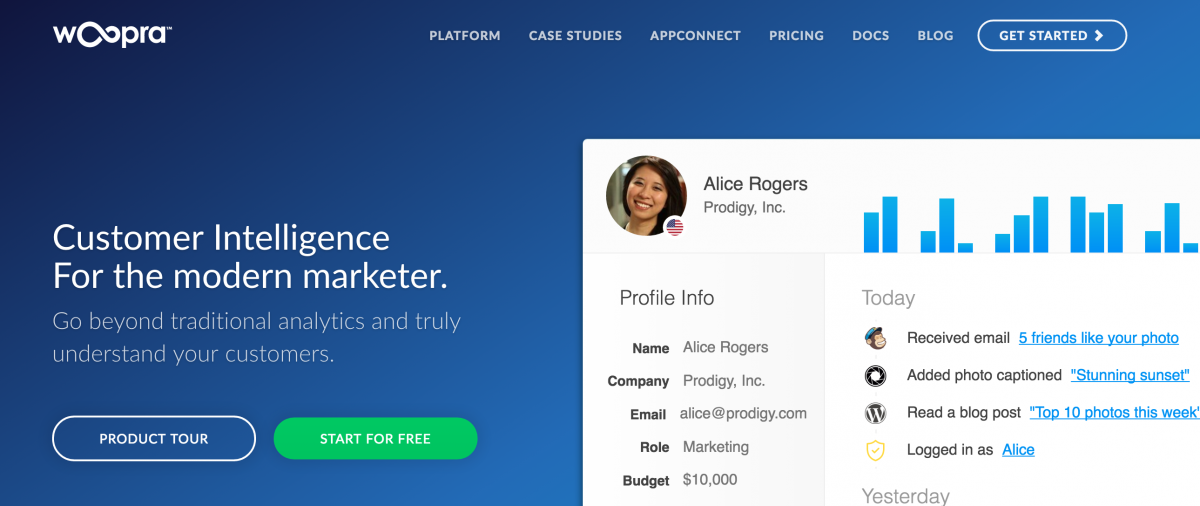
Woopra takes tracking visitor engagement to the next level. The platform automatically builds customer profiles and monitors each action they take on your site–whether that’s visiting a key page, opening an email or filling out a form. Once they identify themselves through a form, you’ll have a comprehensive profile allowing you to get in touch with them at the best time.
UserTesting

UserTesting is a great way to get qualitative data to support the quantitative results you receive from tools like Hotjar or Google Analytics. You can also use this to get ideas about what might be some pain points on your site, and what could be worth testing. Make sure you use their targeting feature so you get in front of testers who best align with your own audience.
Content Promotion and Production
CoSchedule

CoSchedule allows you to organize your entire content calendar in one place and schedule social media messages ahead of time–you can make sure your post gets visibility months after it’s published. Create workflows to keep your team on the same page as content is developed, and ensure you don’t miss any critical steps during publication.
Hemingway App
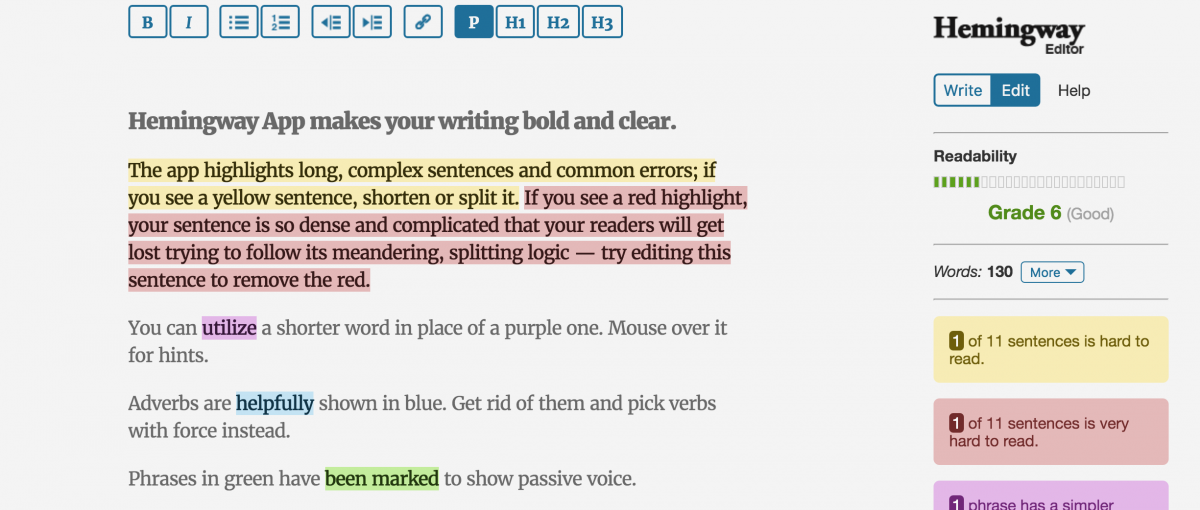
This app can make your copywriting 3 to 5 times more effective. It’s basically a spell-checker, but for writing style instead of individual words. It will tell you if your sentences are too complicated and contain too much fluff. Try it out with your next blog post, and it might surprise you how much of your writing you can trim down.
Google Docs

In terms of collaborative writing, Google Docs is the simplest way to draft, give feedback and revise content pieces. Who wants to pass Word docs back and forth anymore?
Social Media Publishing
Buffer

With Buffer, you can write a bunch of social media posts at a time and parse them out over a number of weeks so that you don’t have to physically be the one to post every social media message. Attach photos, videos, GIFs and automatically shorten and track links in order to monitor the performance of each social post.
Hootsuite

If you need more features, integrations, supported platforms and analytics, check out Hootsuite–the other big player in the social media space. Whereas Buffer is great for scheduling and publishing content, Hootsuite is much more robust when it comes to social media management and juggling multiple channels–not only can you schedule and publish content, but you can source content, respond to followers, monitor analytics and access quite a few more social networks than Buffer.
ShareThis
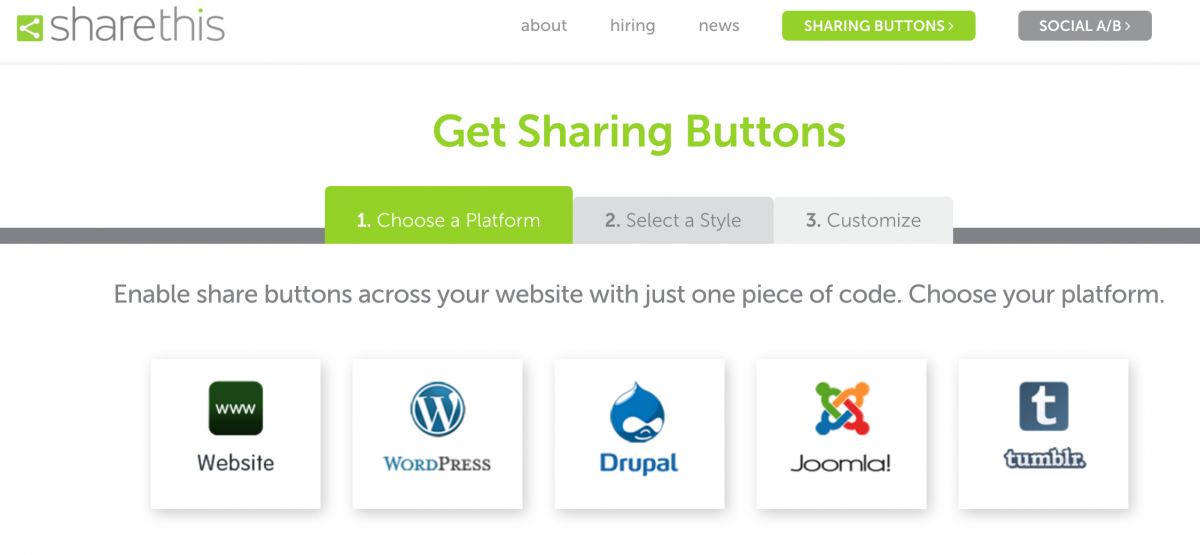
Most often, the fastest way for startup to get off the ground is when it’s actively shared by users. That’s where ShareThis comes into play. Easily add social sharing buttons and icons on your site. If you’re producing great content, you want to provide readers with the simplest means to pass it along.
Marketing Automation
HubSpot

Marketing automation has become the standard for modern digital marketing, and HubSpot not only changed the inbound marketing landscape, but it pioneered marketing automation for small businesses. Aside from their software, HubSpot provides a ton of resources to learn about inbound marketing strategy and best practices, and has an extensive community.
Mautic
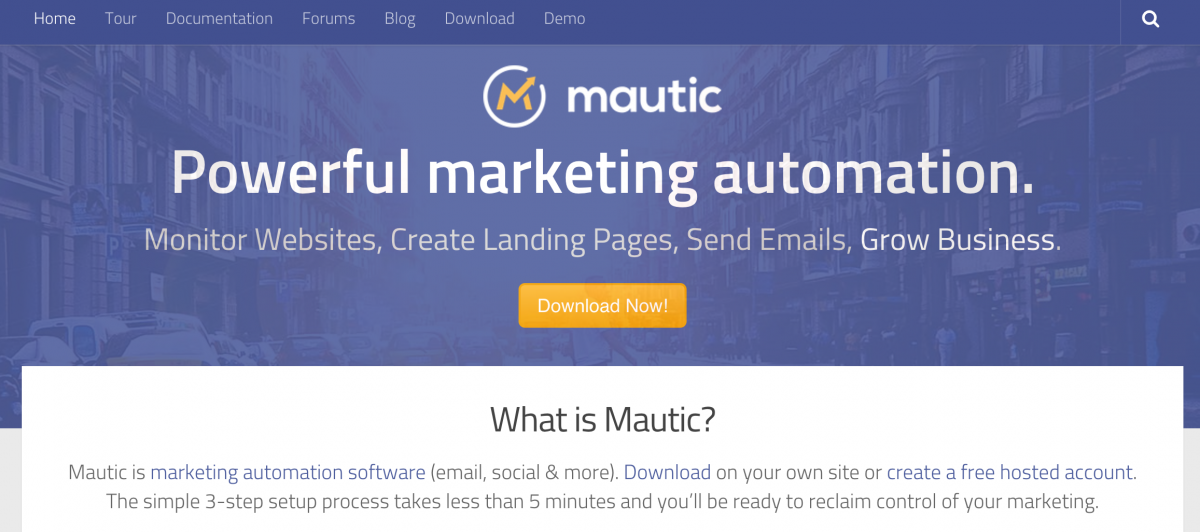
Mautic is a great marketing automation solution for startups in that it’s free and open source. It, too, has a thriving community from which you can learn and gather resources.
Sendy
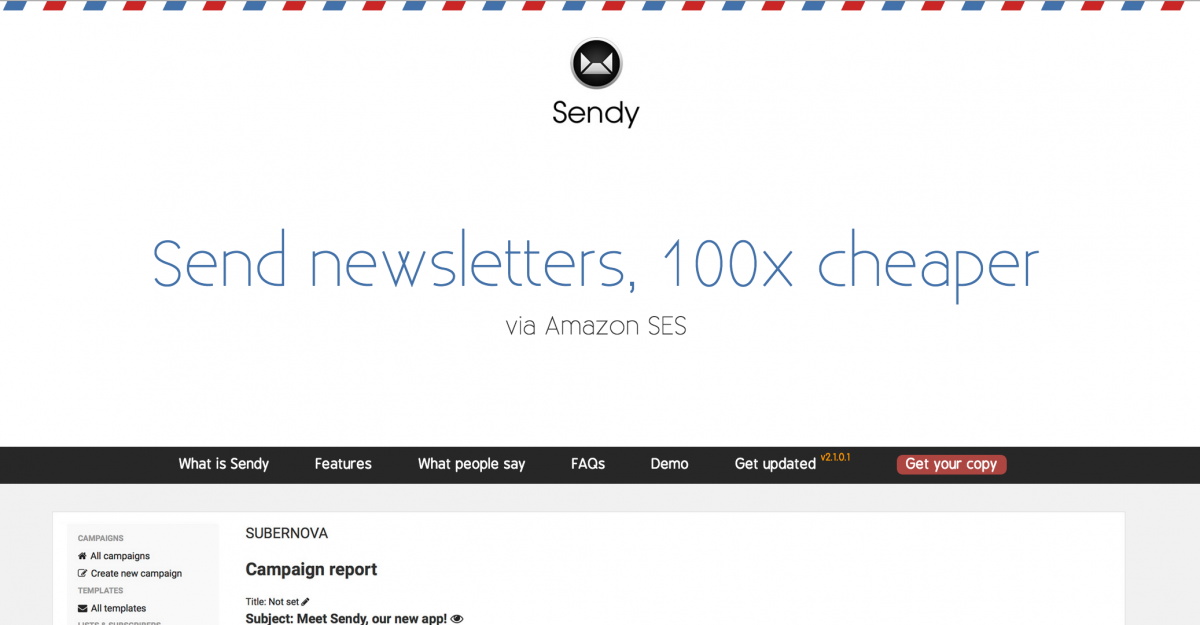
If you’re looking for a low-cost solution for simple email marketing, Sendy offers an open source, self-hosted email application that allows you to send trackable emails through Amazon Simple Email Service (SES). AWS SES prices are incredibly low, when comparing them to a MailChimp or Constant Contact, and because it uses Amazon’s sophisticated email infrastructure, deliverability is strong.
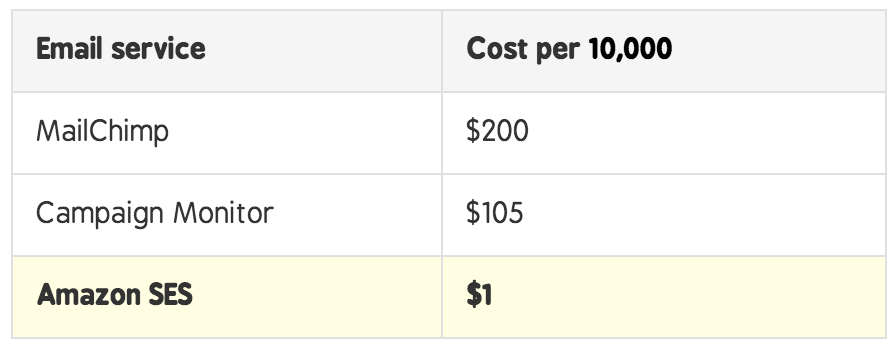
Early Product Marketplaces
Kickstarter

This is one of the more popular platforms for startups to seek crowd-sourced funding. Set your funding goal, share your project, and let backers support it. Kickstarter has an All or Nothing model, so unfortunately, if you aren’t able to meet your goal, you won’t walk away with any of the funds.
Indiegogo

Indiegogo is an alternative to Kickstarter– and here you’ll have the option to choose whether your project is fixed or flexible funding. With flexible funding, you’re able to retain the funds despite missing your goal. They also have a marketplace where they support crowd-funded products, regardless of where they received their funding.
Product Hunt

Product Hunt isn’t really a marketplace per se, but you can get early market sales and discuss your product in its earliest stage with users and other product designers. It has a strong community, and like Reddit, products can be upvoted or downvoted–giving you a pulse on how people respond to your project.
Funding
AngelList
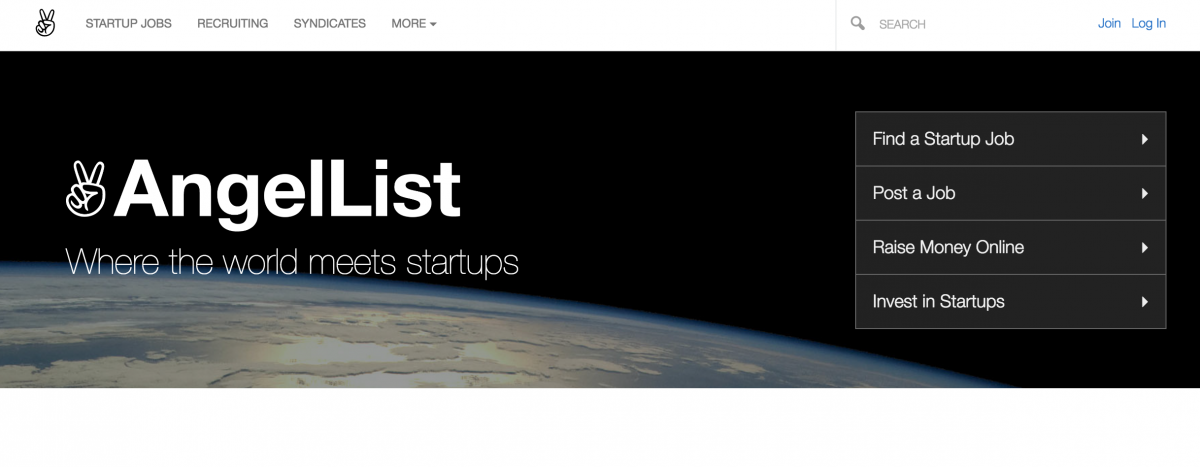
Bloomberg called AngelList the social network for startups back in 2014. On AngelList, startups can build a profile to list information about the company, its history and its capital. From there, they can easily pitch to hundreds of investors and recruit employees.
Top Startup Accelerators in 2016
Here are the top US accelerators from the most recent Seed Accelerator Rankings Report:
- 500 Startups
- Alchemist
- Amplify LA
- AngelPad
- Chicago New Venture Challenge
- MuckerLab
- StartX
- Techstars
- Y Combinator
Cloud Services
Amazon Web Services

Amazon Web Services offers a wide variety of cloud computing needs including computing, storage, databases, and networking. They’re a great option for startups to stay lean and efficient with their IT spend, while allowing for a lot of room to grow as needs increase.
Rackspace

Rackspace is a giant in the cloud infrastructure services industry. They’re better suited for mid-sized organizations and have a great focus on customer service. They can be a bit more expensive than AWS.
Microsoft Azure
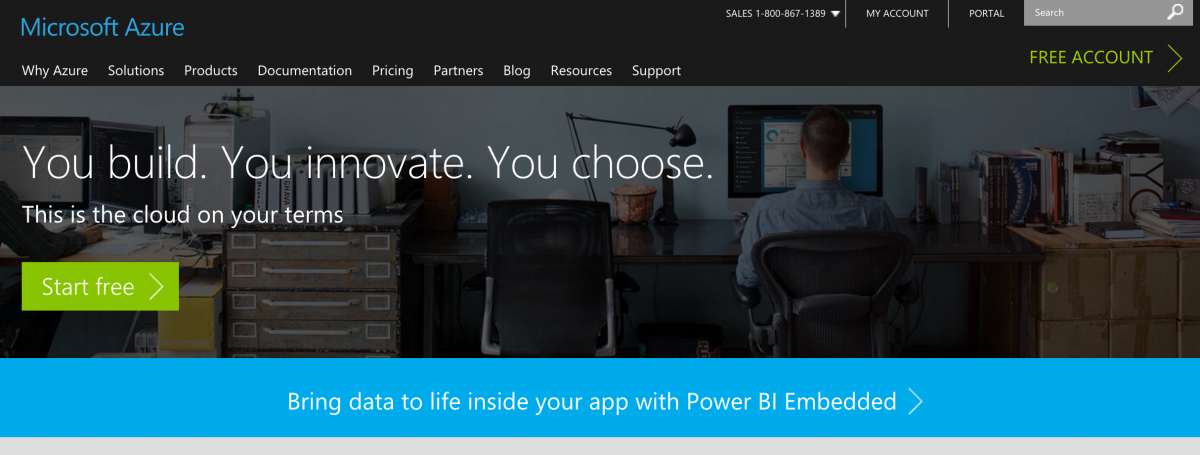
Microsoft Azure offers a collection of cloud services–analytics, computing, database, mobile, networking, storage and web. They support a wide range of operating systems, programming languages and frameworks giving developers a great deal of flexibility to work with.
Google Cloud
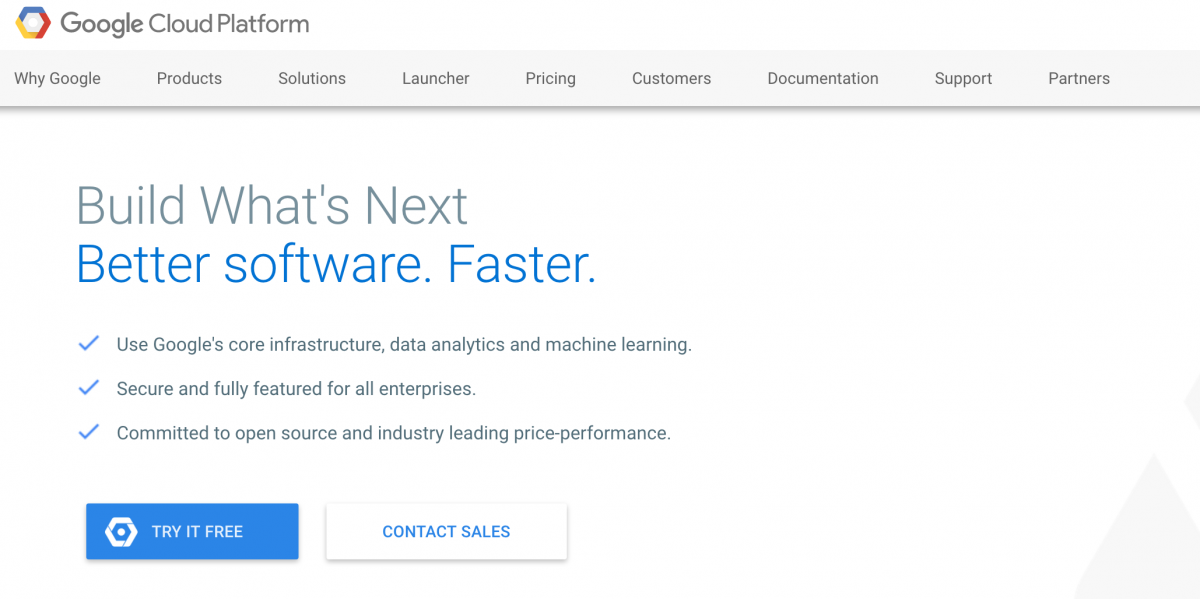
Google also offers a cloud platform service, offering you the ability to run your application using the same technology and tools used at Google. They remove any worries about capacity, reliability or performance as you scale up your product with their “no-ops, just code” services.
RightScale
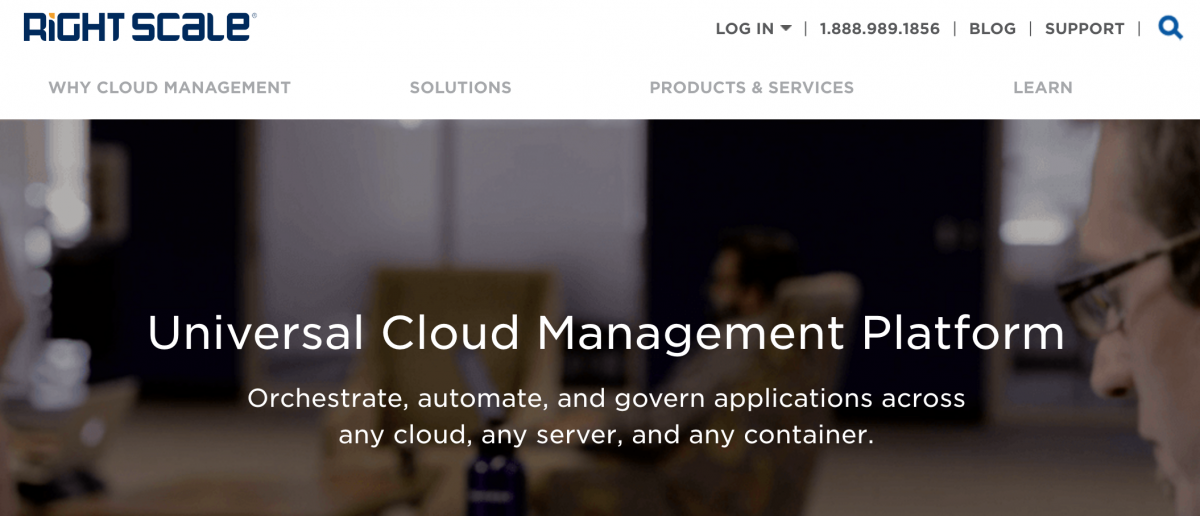
First to market back in 2006, RightScale is a tool to help you manage your cloud implementations. In times of high traffic, their software will help scale your servers quickly.
Scalr
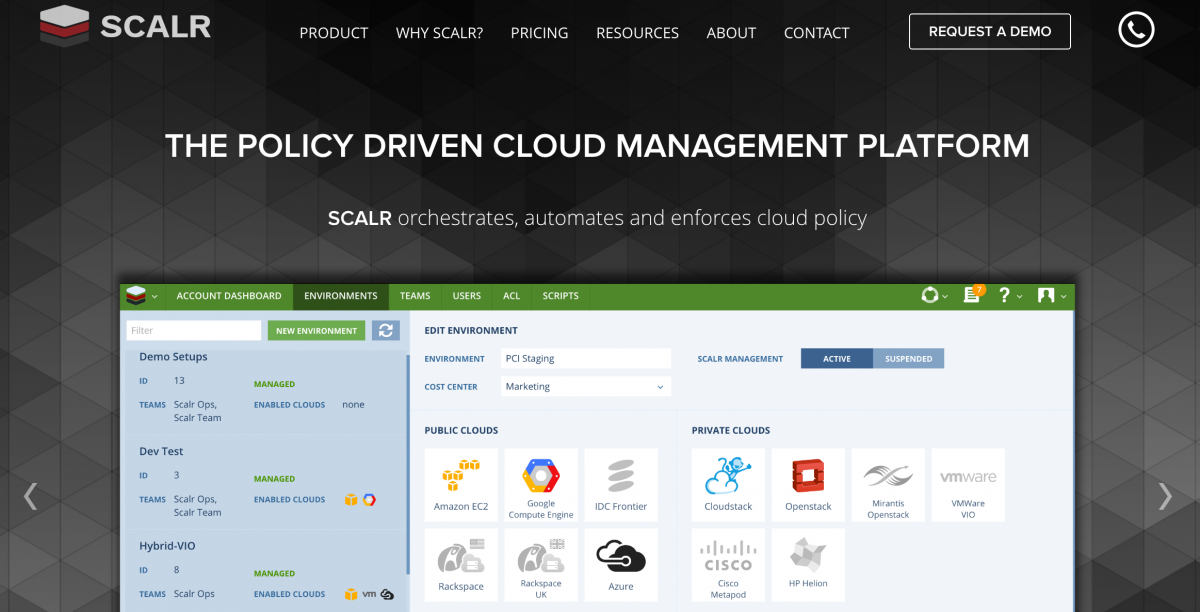
A competitor with RightScale, Scalr focuses on hosted cloud management software. It’s also available as open source software, if you plan to manage your own servers in-house.
HashiCorp

HashiCorp helps you by taking care of the headaches associated application development and deployment. Their solutions manage both physical machines and virtual machines, Windows, Linux, SaaS and IaaS, etc.
Searchify
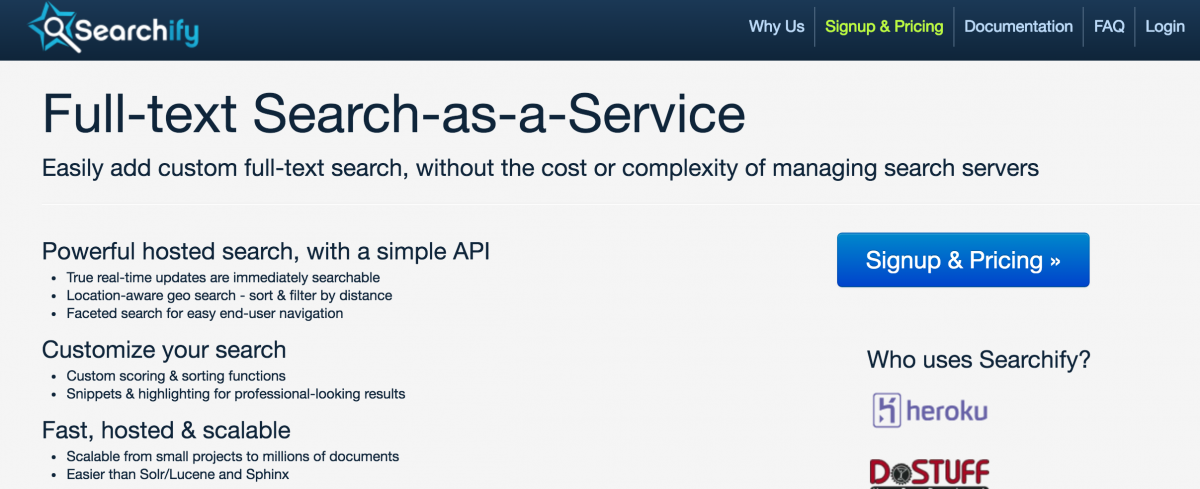
Searchify provides hosted search as a service. It allows developers to add search functionality to their website or app using simple client APIs.
Platform Services
Heroku

Heroku is a cloud platform as a service, supporting Ruby, Java, Python, and other programming languages. Heroku lets developers focus on writing code, so they don't have to worry about deployment & system admin issues.
Pantheon
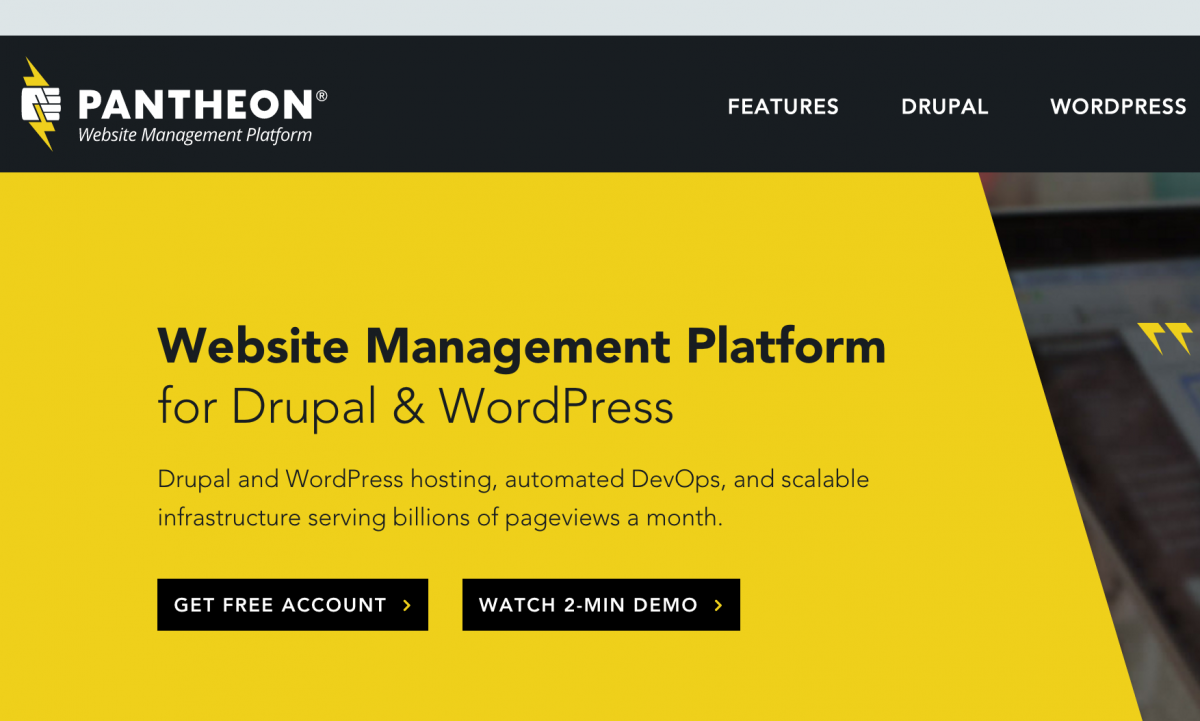
Pantheon is a website management platform. Here you’re able to build and manage Wordpress and Drupal websites, automate system admin tasks and push site changes quickly with out-of-the-box dev, test and live environments. Not to mention, they tout the fastest hosting anywhere.
Acquia

Acquia provides a cloud platform for building more than just websites, you can build digital experiences. They’re used by global organizations such as Intuit, Warner Music Group and the American Red Cross and can ensure you’re able to easily deploy and manage your product at scale. It’s important to note Acquia only runs Drupal and the software needed to run, support and improve Drupal performance.
Platform.sh
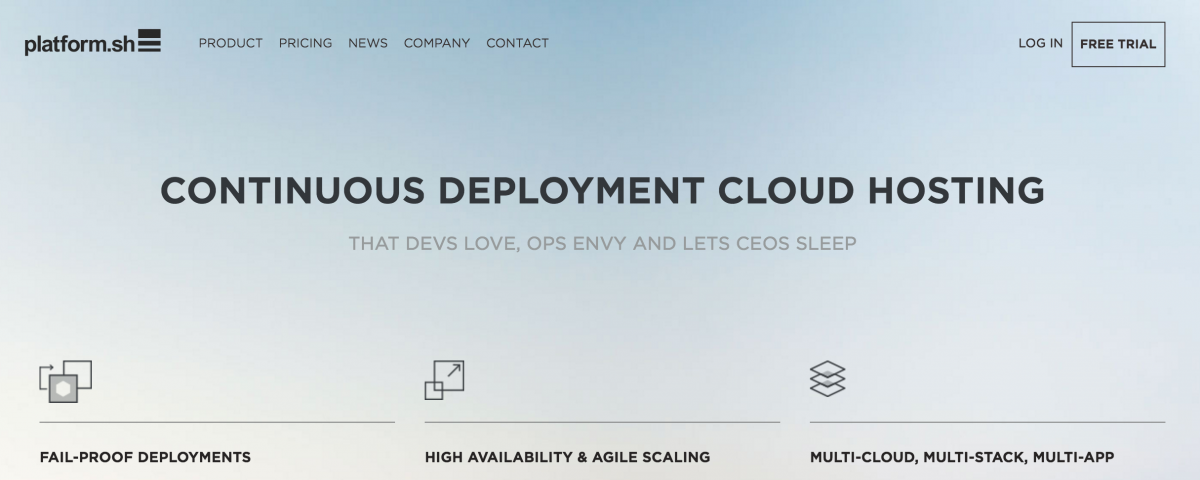
A relatively new player in the game, Platform.sh has a strong focus on the PHP community, in particular the web application markets and and large PHP e-commerce and media sites. It’s even been chosen as the official cloud partner for open source projects such as Symfony and Drupal Commerce. It supports technologies such as PHP, Symfony, Drupal and Wordpress.
Sales
Socedo

Socedo is all about using social media to generate leads. They developed a demand generation system allowing marketers to discover, qualify and engage prospects through social media. They’ve garnered a lot of attention from the press, and provide a great solution for B2B sales.
HubSpot Sales
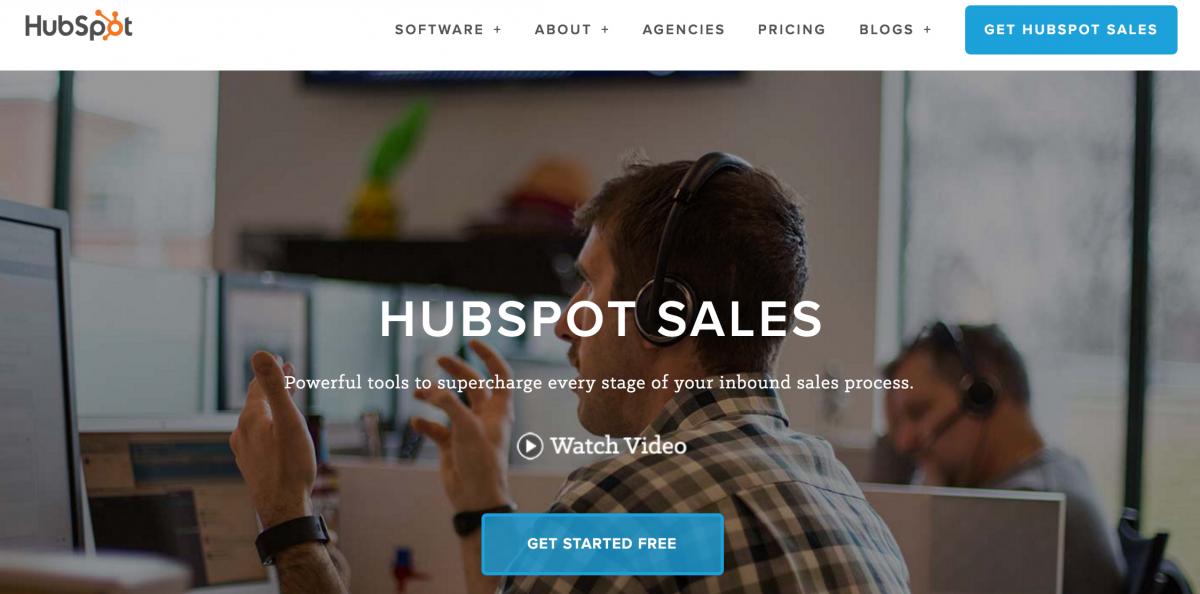
HubSpot earns another mention on this list, but this time it’s for their sales platform. Whereas as the marketing automation tools facilitate inbound marketing, this facilitates inbound sales. It’s a sophisticated way to keep your sales process organized and efficient.
Calendly

One of the biggest eaters of time in the startup world is the back and forth required to schedule sales meetings. Calendly solves that issue by allowing prospects to schedule their own meetings on their own terms. They just pick an open time slot on your schedule, and the meeting is booked. No unnecessary emails, or phone tag.
Document Management and Proposals
PandaDoc

PandaDoc saves you from the monotony of creating sales contracts, proposals and HR documents. It helps you automate the workflow of document creation and it gives you insight into what happens with your document once it’s out the door–did they read it, did they sign it? Their offerings are really robust, and the biggest draw is easily time saved.
DocuSign

If you just need secure electronic signatures so your clients can sign from anywhere they have an internet connection, DocuSign is a great solution. It doesn’t have a lot of the other document management and creation features you’ll see with PandaDoc, but it definitely gets the job done.
Time Tracking and Bookkeeping
Harvest

A lot of tools tell you about how much time they’re going to save you, but how do you know exactly where your time needs to be saved–what are you spending the most time doing? That’s where Harvest comes in. Track time by project, employee or client, and gain a much better understanding of how your time spent matches up with your business objectives and priorities. Harvest conveniently integrates with QuickBooks, and has its own desktop app for simple time tracking.
FreshBooks
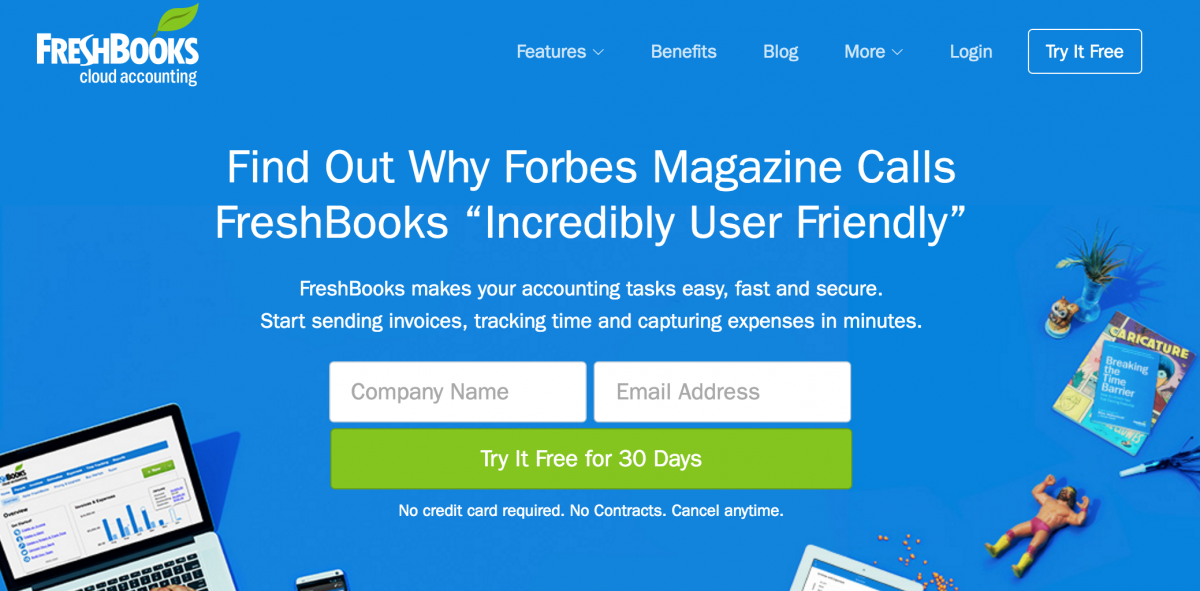
FreshBooks was built for small and medium enterprises, and it’s simple solution to invoicing, time tracking and bookkeeping.
Legal and HR
Zenefits

Zenefits helps you manage and keep track of all your HR functions in one place–onboarding, health insurance, payroll, PTO, 401(k), it’s on one easy-to-use dashboard accessible to employees and managers. Their solutions are very intuitive and take a lot of the confusion and mystique out of HR.
LegalZoom

LegalZoom makes legal advice and help accessible to those who can’t afford the high costs of traditional legal counsel. If you’re just starting out and need help forming your business, turning here could be a great option.
Distributed Teams
Zoom

When working with teams located around the country, or even overseas, it’s often difficult to sync up for meetings and discussions. Zoom is an affordable and easy to use video conferencing solution that allows screen sharing, video and audio recording and group messaging. You could use Skype or GoToMeeting, but you won’t get a lot of these features.
RingCentral

RingCentral takes business phone systems to the cloud. You get to keep your traditional desk phone, but it’s now connected to the internet and now communicates with RingCentral’s cloud platform for secure voice, fax, text, audio conferencing and online meetings.
Slack

Slack has taken the startup business world by storm and has upped the game for internal office communication substantially. Keep your conversations organized in channels, seamlessly send files and integrate with almost every other platform and tool you’re currently using. There’s a reason it’s become one of the fastest growing B2B SaaS businesses.
Educational
Codecademy
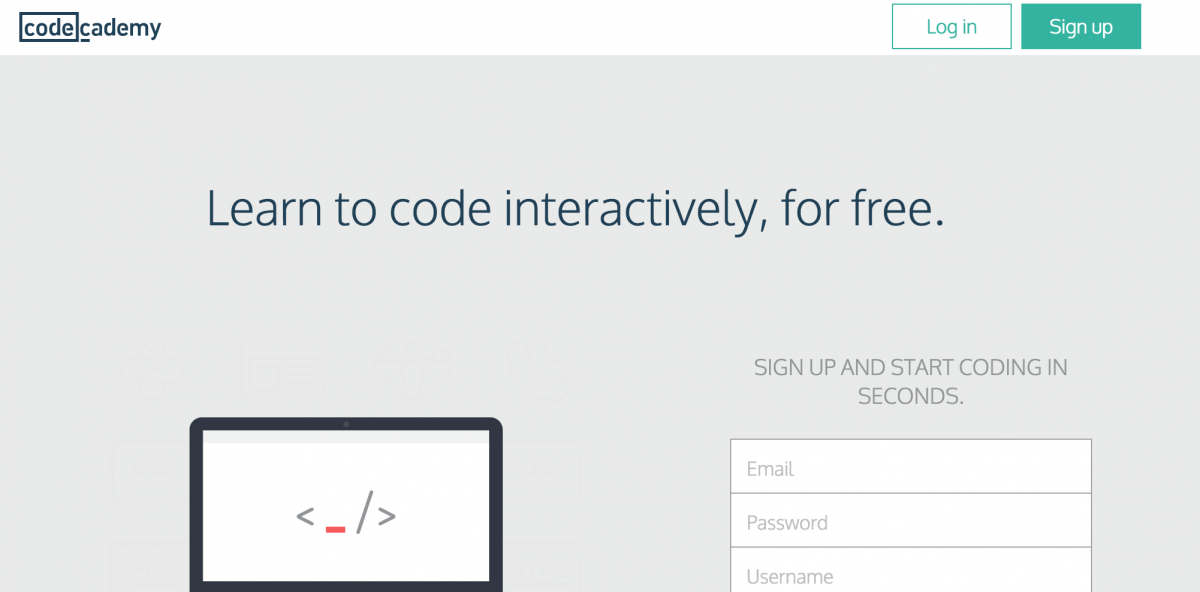
Sometimes we marketing folk need to cut our teeth on a bit of code in order to better work and communicate with developers. There’s endless value in putting the time in to learn a coding language, and Codecademy makes that free and easy. Learn all the essentials: HTML, CSS, PHP, JavaScript, jQuery, Python and Ruby.
Treehouse

If you’re looking for something a little more rigorous, and are willing to pay for it, Treehouse is a great way to level up your skills. They also offer plans for organizations looking to train entire teams.
Kahn Academy

If you’re looking to learn something other than code and web design, check out Kahn Academy. They offer courses math, science, computer programming, art, history, economics, and a whole bunch more. It’s all free and open to anyone.
----
This list surely isn’t exhaustive, and there are an incredible number of tools out there loved by countless users–these are just some of our favorites, and some which we’ve found to be great solutions for our clients. Again, it all comes down to which of these helps drive your KPIs and, ultimately, your bottom line. If there are any you think we should take a look at, leave a comment.

